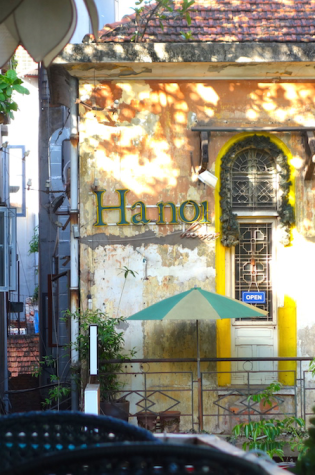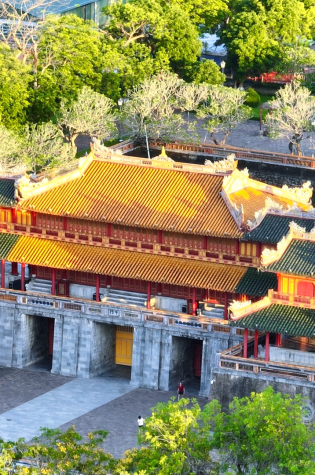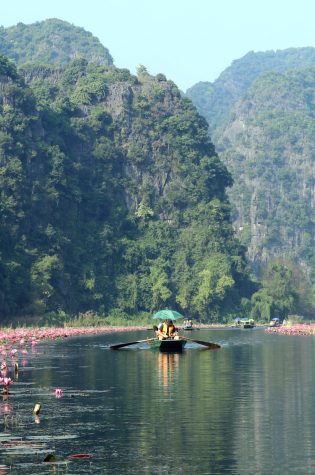Y Son Festival
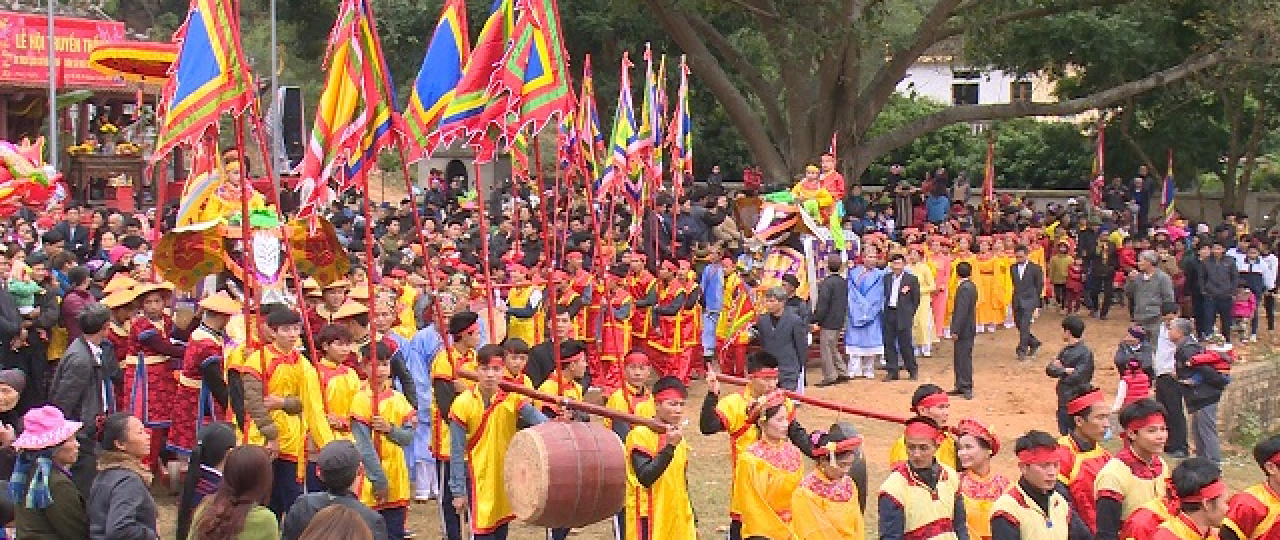
Date & Location
06:00 24/02 - 20:00 26/02.
Opening day
All the village divisions will carry palanquins, drums, gongs, flags, and banners, gathering at the temple — the place where the saint Hung Linh Công is worshipped. After the ceremony at the temple, everyone will proceed to the pagoda carrying two wooden divine horse statues (one white and one red), placed on wooden carriages with wheels. The procession of the divine horses marks the opening event of a very lively festival day. Visitors often join the procession in groups, following the palanquins stretching from the temple to the pagoda, passing through Yen Ngua Mountain.
When the procession arrives at the pagoda, the divine horses are placed solemnly on stands, then the incense pots are brought down to the assembly hall, and banana stalks (called “do”) are brought into the pagoda to start the ceremony. The banana stalks are selected according to specific standards to hold the “do” sticks. These are bamboo poles of medium thickness, about two “giong” (a local length unit) long, sharpened at one end to form a flower shape (similar to the “do” sticks at Soc Son temple but not dyed red). Beside the flower-shaped “do” is a ripe rice ear with full grains. Each division prepares 10 such “do” sticks. Sixty “do” sticks (from 6 divisions) are inserted into the banana stalk and then carried into the pagoda, which is called the “do procession.” The flower-shaped “do” and rice ear symbolize the sincere prayers to Buddha for favorable weather, harmonious winds and rains, and fruitful crops.
After the ritual, these “do” flowers are distributed to the village elders who are in their seventies, eighties, and nineties. Next comes the ceremony called “rolling the flag and stamping the ground.” All officials and young men from the divisions carry drums, gongs, flags, and banners, dressed in traditional costumes with scarves and neat pants, proceeding to a large prepared open field of nearly one acre, guided by an official in charge and following drum signals.
The troops march in a semicircular formation, rolling into three circles, while beating drums and gongs loudly. After forming a long line, they fold to form the shape of the Chinese character “tâm” (meaning “heart” or “mind”) and stand in three rows with flags and drums evenly spread. Following the drumbeats and commands from the official, the troops perform dozens of coordinated movements such as standing at attention, sitting down, raising flags, lowering flags, turning left, turning right, all synchronized with the drumbeats.
Following this is the “pulling characters” ceremony, or arranging characters. Here, the people often arrange the characters “tâm,” “nhân,” and “đức” — representing “heart,” “benevolence,” and “virtue” — in Chinese calligraphy.
The mid day
The generals and elephant handlers mount the elephants, and the procession enters the pagoda to pay homage to Buddha. On the platforms of the five elephants, there are five male elephant handlers accompanied by five female generals. The ceremony performed is the “Lễ Rún” (as described above). Following this, the ceremonies of “rolling the flag and stamping the ground” and “pulling characters” are carried out.
The last day
It is the most joyful and bustling day, and also the closing day of the festival. Early in the morning of this day, all the generals and handlers mount elephants and horses. Before entering the pagoda to perform the ceremony, the five elephant handlers and five female generals must undergo a three-round inspection. This is the most solemn moment, requiring the five generals and five handlers to display the proper demeanor of "refined spirit and solemn appearance."
The inspection procession includes six palanquins and makes three rounds passing by the rows of elephants and horses from the different hamlets. When the palanquin procession and the sacred horses pass by the rows of generals and handlers, their eyes must look straight ahead without blinking. Their faces should wear a slight smile, and they must sit upright with dignity. The inspections conducted by the hamlets are done very seriously and accurately. After the three rounds, those generals and handlers who meet the standards will be rewarded, while those with shortcomings will be punished. The ritual performed is the “Lễ Rún.” This is the most solemn and joyful ceremony. Seeing the male elephant handlers and female generals dressed in traditional festival costumes performing the Lễ Rún ritual with graceful and synchronized movements, full of respect and beauty, truly shows how much effort the local people have put into practicing it.
Besides the ceremonial rites and processions performed according to ancient traditions, the festival also features many folk games such as blindfolded goat-catching (using a real goat), swinging, “phỗng” jumping, traditional opera performances, human chess, chèo singing, and other games.
More events like this
Unforgettable experiences
Every experience is designed to leave a lasting impression. Every event is curated with the best experiences for you to enjoy.
24/7 Support
Every experience is designed to leave a lasting impression. Every event is curated with the best experiences for you to enjoy.
Good reviews
Every experience is designed to leave a lasting impression. Every event is curated with the best experiences for you to enjoy.
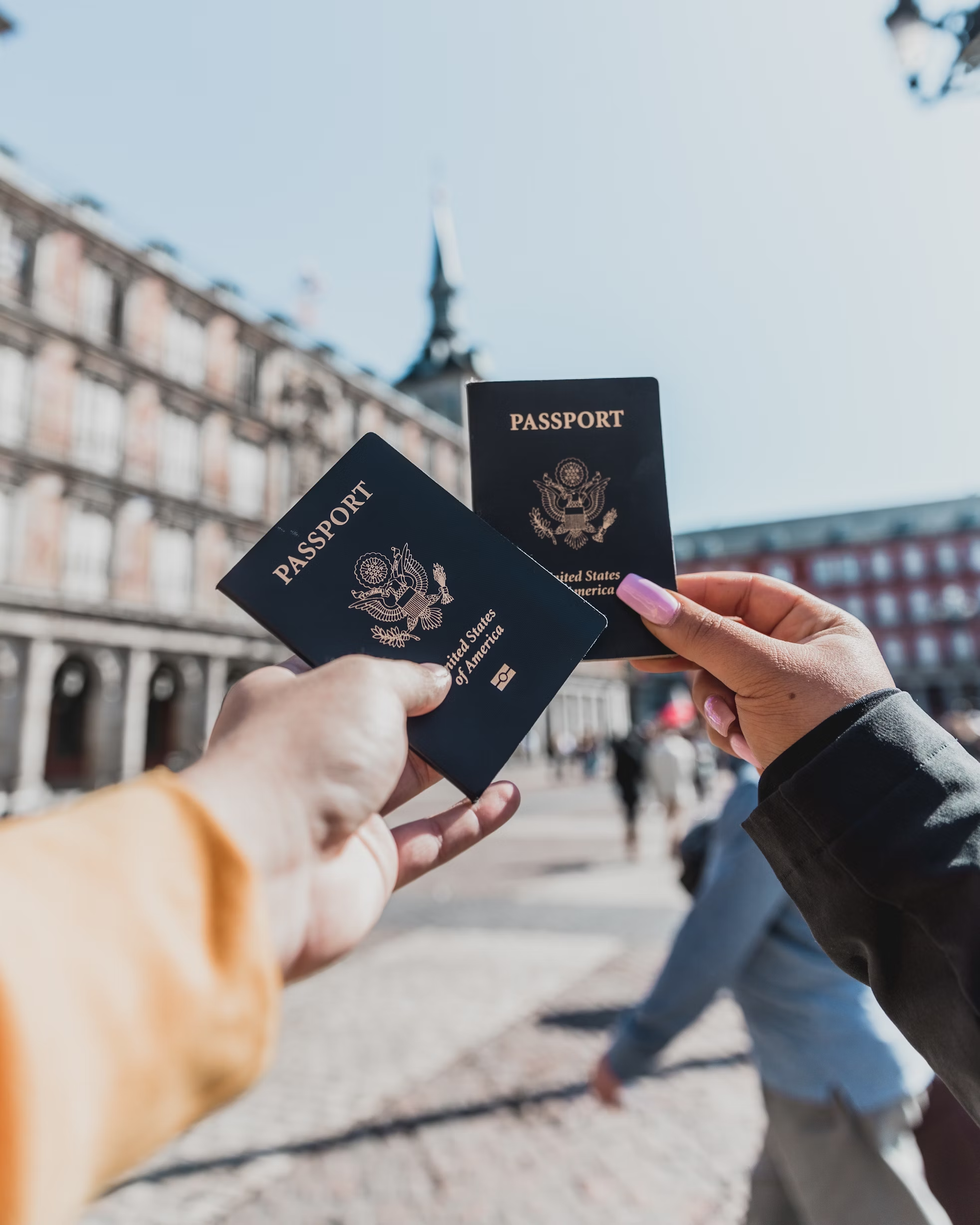
Vietnam offers easy entry for travelers
Helping visitors easily experience a seamless immigration process when coming to Vietnam.
Explore now

